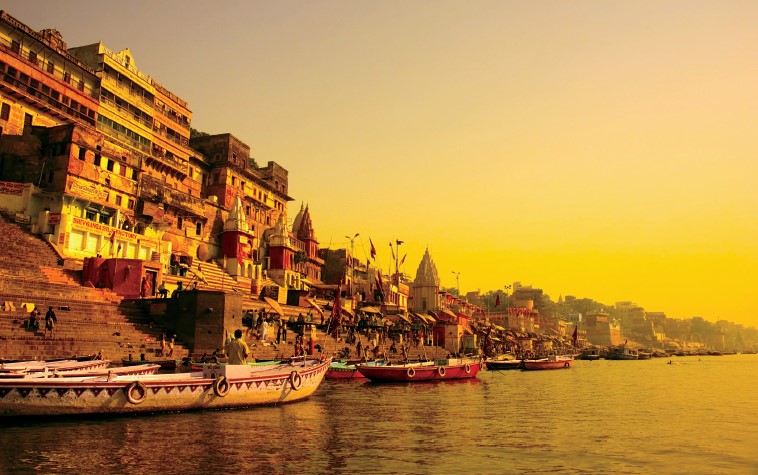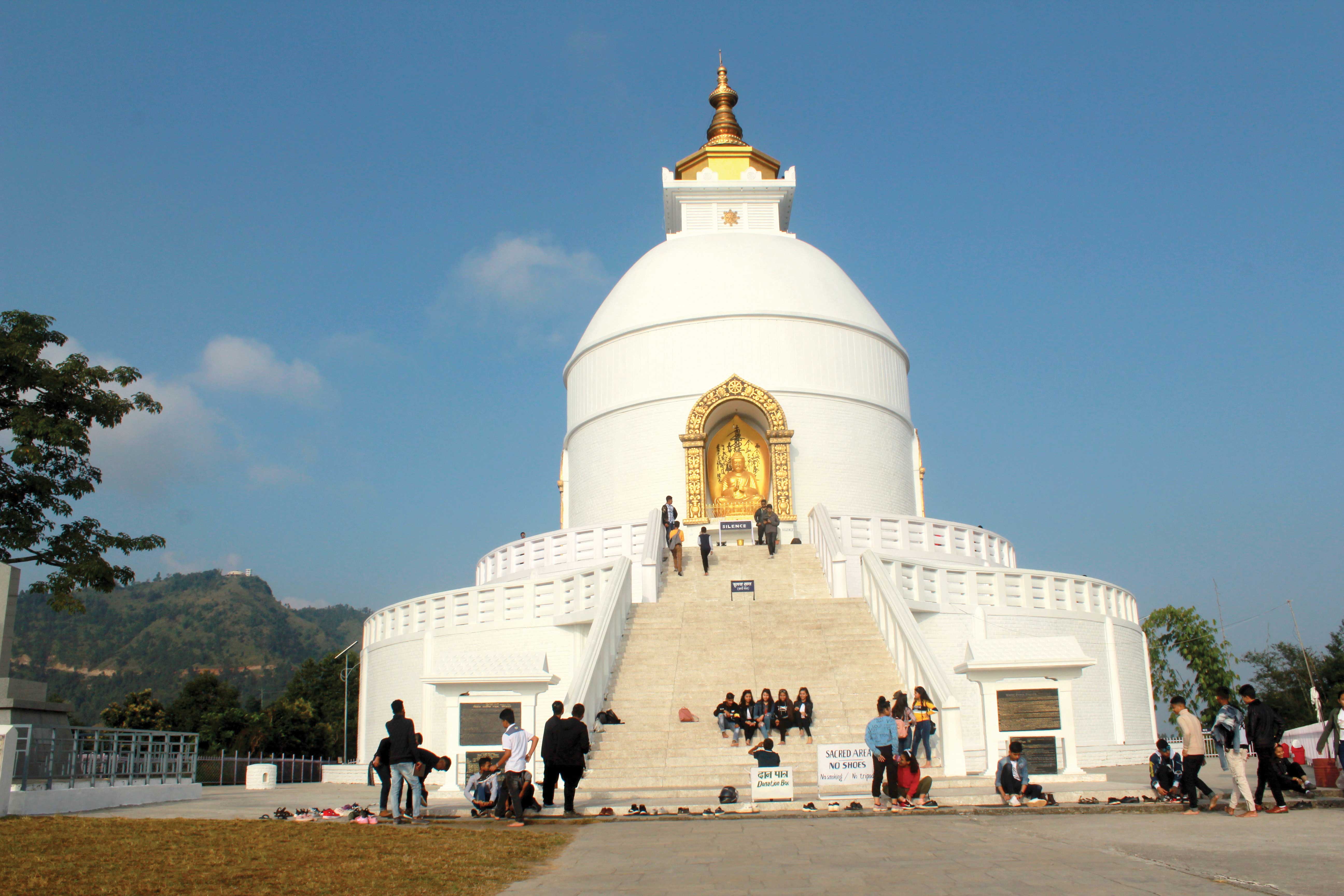Visiting the city of Patna, in August 2017, marks the beginning of a new chapter for my Ganga research, sending my mind back to each of the journeys I’ve been on to get here, starting at her official source at Gaumukh that I visited in October 2007.
There, it seems as if an invisible force is pulling the essence out of the sky, into material form, like a percolator drawing it down from space, collecting it in a denser form in its reservoirs below, a massive point of energy creating a vortex between two dimensions, which allows this connection of gaseous molecules and liquid to occur. Colliding here, sucking the water from the clouds to the earth, gaseous form thus whirlwinds into manifestation as water, as rain, that collects in vast tanks of compact ice in the valleys and snow upon the mountain tops, dripping out of the glaciers, forming great rivers, or emerging through carefully channeled cracks in the mountain sides, through a master plan design of levels and layers that filters it through, evenly bringing it all to a main channel grooved into the lower ground of that particular cradle that channels the water along its path to the ocean.
I meet up with ‘Dolphin Man of India’, R.K. Sinha, long-term Professor of Zoology at the University of Patna, who’s now acting as Vice Chancellor of Nalanda Open University. He’s been fascinated by these creatures since childhood, and remembers watching them play in multitudes in the river at that time. Fifty-million-year-old fossilized forms found in Kashmir make them the oldest remaining cetaceans on earth, their telltale long, pointed noses distinguishing them from their sea-faring counterparts, who have rounder snouts. “They’ve already become extinct in the Yangtse River basin in China, and are on the endangered list here,” Sinha tells me. “This is a sign for us to take great care,” he comments. “A warning that this could happen here, too.”
Although there are sightings of them as far up as nearby Haridwar, it’s in Ganga’s free flow of around 1600 km between the barrage at Kanpur in central Uttar Pradesh and that at Farraka on the western edge of West Bengal that the dolphins mainly live and breed. And in the monsoon season, when the salinity of the water is less due to the large flow of fresh water pouring into the ocean, they can even be sighted along the coast of the Bay of Bengal.
“River water pouring into the ocean…” The pictorial image of her following a downward flow, coursing from the mountains to the ocean, reappears to me, as I sense her releasing the energy of life out to the land little by little, as she carves her way through, lighter than earth, yet able to erode it, providing fertile soil to the ground near her banks, naturally fertilizing itself through interaction with the water that’s holding the minerals and vitamins carried down from the mountains, now deposited as flood waters on the plains, as she spills out her fruit to the land. Thus, all of those drops of water, like jewels carrying various nutrients to the soil, having descended and congealed, eventually find the main branch of that web at the lowest part of the basin.
Sinha takes me through a list of dramatic changes he’s noticed to Ganga’s overall flow; the mega Tehri Dam that blocks her natural exit from the mountains, and years of squabbling over the Lohari Nag Pal tunnel project that was eventually halted; then goes on to explain how dolphins also used to populate every major waterway in Nepal. Now, they survive only in pockets there, like in parts of the lower Koshi and in the sanctuaries of western Nepal, where they still breed within small groups. Since the barrages lying on every one of the larger rivers near the Indo-Nepalese border trap them, they’ll never be able to reach more diverse breeding grounds, and may eventually become extinct. Much effort is going into raising awareness about the plight of these creatures across the board, which not only means protecting their habitat, but also through educating fishermen, as well as dealing with anti-social elements, who play a key ‘behind the scenes’ role.
The Vikramshila Wildlife Sanctuary was set up in August 1991, as an 84-km stretch of water, whose boundaries are not marked by walls or fences, but by natural icons, such as the granite outcrop at Sultangunj upon which sits the Temple of Ajgaivinarth, to where pilgrims flock to gather Ganga water (Jal). I go along to this small town, nearby Bhagalpur in eastern Bihar, and am met by a couple of fishermen who’ve been sent to show us around by Dr. Chaudhery, a colleague of RK Sinha’s. This ‘Holy Island’—now sitting inland since Ganga shifted course 100 m away from her previous shoreline in 1992—marks one end of the sanctuary.
The day before, I’d met Chaudhery at the University of Bhagalpur, where like following a web of tributaries inside to span depths of years into history, he’d taken me on a grand tour of the social and political structures manifesting along the downstream flow of the river since 1947, from Sultangunj to Kahalgaon, where the three rocky outcrops sitting inside the river there mark the other end of the sanctuary’s boundaries.
At the time of Indian independence, a law was passed saying that everyone may freely use the river as they wished. Anyone may navigate upon it, as well as take fish from it. However, after some years, the state government wanted to collect revenue from the people, and subsequently leased the river out to contractors to do the job for them. So, from then on, one would have to pay a fee to use this stretch of river in any way. It became very difficult to regulate, as it was also one of the most impoverished areas in SE Asia at the time.
In league with government forces, the warlords had control; and the fisherman suffered. As they were not fishing for commercial purposes, they were having a hard time both feeding their families and paying taxes to the mafia lords. Even though they knew it was wrong, they started killing, and then both selling and eating dolphin meat, just to survive. Realizing the control over their rights to the river was unfair, the community started protesting through the 1980s—the ‘Ganga Mukti Andulan’ (Free Ganga Movement) also involved many local people from the Kahalgaon area, and the lease system was abolished by the state government in 1990.

However, after just one year of being able to freely traffic the river, in 1991, the entire 85-km stretch was officially declared a wildlife sanctuary, which by international definitions meant that human activity and presence within its boundaries had to be minimized. Once again, this area had an element of state control over it.
Since civil authorities had no access to the river, there was a police force on the land, but they were not equipped to deal with crime on the river, and as the local people once again became entangled in the dragnets of regulatory authority, this time within the official grounds of the place having ‘sanctuary’ status, goondas, or anti-social groups, emerged, dividing up a 65-km segment of the water between themselves in roughly 14 km strips. From inside fiefdoms built upon sandbanks that could be washed away at the whim of Ganga, mafia lords would operate their micro-existences, bullying the fishermen for a share in their meager earnings, an essentially forced taxation upon a fishing community using a river that was actually free!
As I check how she spans deep into other dimensions in this way and affects the human beings living next to her shores, the answer to my question expands into wider parameters. For, like bridges between dimensions, grand Tirthas, where ice melts from solid to liquid, and then flows downwards through a trillion sources, like a trillion synapses of the brain, connecting one memory to another across the whole Indian, Nepalese, and Bhutanese Himalayas, all serving one eventual aim to flow along a path of least resistance until reaching the ocean, so am I reminded that she’s absolutely connected to every fraction of her flow, as both a cause and as an effect.










